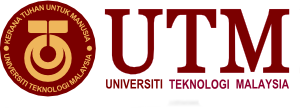About the Journal
History of ASEAN Engineering Journal

ASEAN Engineering Journal (AEJ) is the official publication of Japan International Cooperation Agency (JICA) Technical Cooperation Project for ASEAN University Network (AUN) and Southeast Asia Engineering Education Development Network, with strong supports from the Government of Japan and ASEAN Member Governments, 26 ASEAN Member Institutions (MIs), ASEAN Secretariat and AUN Secretariat with support from 14 leading Japanese Universities.
Over the years, AEJ developed a strong international academic network from extensive human resources established by network of professionals and continuous collaborations via the journal.
First launch in 2011, AEJ was initially divided into 3 parts with its own ISSN. Two issues of each division were published yearly in June and December with both online and printed versions were released.
| Journal Title | ISSN | Scope |
| ASEAN Engineering Journal Part A | ISSN 2229-127X |
|
| ASEAN Engineering Journal Part B | ISSN 2286-7694 |
|
| ASEAN Engineering Journal Part C | ISSN 2286-8151 |
|
From 2017 onwards, AEJ is no longer divided into Part A, Part B and Part C, but the three parts have been merged together. Currently, AEJ only publishes electronic full papers with e-ISSN 2586-9159 under “ASEAN Engineering Journal.”
Peer Review Process
The peer review process of our journal is outlined through the inclusion of a dedicated section that provides detailed insights. This section serves as a comprehensive resource, offering transparency into the various dimensions of our peer review methodology. Notably, our approach exclusively involves external reviewers to ensure an impartial evaluation. To uphold the robustness of our double-blind peer review system, a minimum of two external reviewers assesses each manuscript. Decisively, the authority to determine manuscript acceptance rests with the section editor, with the involvement of the Editor-in-Chief reserved for exceptional cases. This strategic transparency allows authors, reviewers, and readers to gain a clear understanding of our evaluation procedure. By providing such comprehensive information, we uphold the principles of accountability, transparency, and excellence in our journal's content assessment.
Open Access Policy
This journal provides immediate open access to its content on the principle that making research freely available to the public supports a greater global exchange of knowledge.
Sponsors

Universiti Teknologi Malaysia (UTM) is a leading innovation-driven entrepreneurial research university in engineering science and technology located both in Kuala Lumpur, the capital city of Malaysia and Johor Bahru, the southern city in Iskandar Malaysia, which is a vibrant economic corridor in the south of Peninsular Malaysia.
With a strength of more than 2,000 academic staff, of which more than 200 are foreign graduate faculty members, UTM continuously strives to develop and enhance quality academic and professional programmes of international standard and global recognition. The student population consists of more than 11,000 full-time undergraduate students, more than 6,000 enrolled on distance learning programmes as part-time students and more than 9,000 postgraduate students in various fields of specialisation. Out of this, more than 3,000 are foreign students.
UTM's mission is to lead in the development of creative and innovative human capital and advanced technologies that will contribute to the nations wealth creation. This is in line with the aspiration of the country towards becoming a knowledge-based, innovation-led economy grounded in creativity and innovation with high value creation. Through a strategic transformation of its organizational structure, UTM is focused in creating a vibrant academic culture and fertile intellectual ecosystem that inspire creativity and innovation.
Innovation is thus central to its core value, with the innovation culture permeated across all dimensions of the university including teaching and learning, research and development, writing and publication, management and administration, staff and student development, consultancy and professional services and also university social responsibility. Innovation is expedited by the university community through concerted effort and strong team spirit with shared mission and purpose.
UTM has also established a reputation for innovative education and leading-edge, proven by becoming the three-time winner for the National Intellectual Property Award for organization category. A stimulating research culture exists in UTM through 11 Research Alliances (RA) in strategic disciplines namely Sustainability, Infocomm, Water, Cybernetics, Biotech, Construction, Materials & Manufacturing, K-Economy, Energy, Transportation and Nanotechnology. In addition there are 28 Centres of Excellence (CoE) in addition to academic faculties to service technological education and research needs of the university.
UTM is also actively engaged in research collaboration with renowned institutions such as Harvard University, MIT, University of Oxford, Imperial College of London, University of Cambridge, Tokyo University and Meiji University on areas of mutual interests. To facilitate further engagement and networking in academic and research undertakings, international satellite offices have been established in Tokyo, and already in the pipeline are plans to establish satellite offices in Doha (Qatar), Madinah (Saudi Arabia), and in Boston (USA).
UTM is thus renowned for being at the forefront of engineering and technological knowledge and expertise, contributing to the technical and professional workforce of the nation since 1904. Being a graduate-focused university, UTM has the highest number of postgraduate enrolment in engineering and technology, which is one of the important components in contributing towards the development of an innovation-led economy. Having produced more than 200,000 technical graduates and qualified professionals over the years, UTM has earned its place as Malaysia's premier university in engineering and technology which inspires creativity and innovation.















